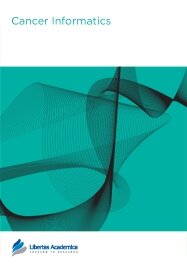

Publication Date: 24 Aug 2010
Type: Original Research
Journal: Cancer Informatics
doi: 10.4137/CIN.S5460

Mathematical modeling of cancer development is aimed at assessing the risk factors leading to cancer. Aging is a common risk factor for all adult cancers. The risk of getting cancer in aging is presented by a hazard function that can be estimated from the observed incidence rates collected in cancer registries. Recent analyses of the SEER database show that the cancer hazard function initially increases with the age, and then it turns over and falls at the end of the lifetime. Such behavior of the hazard function is poorly modeled by the exponential or compound exponential-linear functions mainly utilized for the modeling. In this work, for mathematical modeling of cancer hazards, we proposed to use the Weibull-like function, derived from the Armitage-Doll multistage concept of carcinogenesis and an assumption that number of clones at age t developed from mutated cells follows the Poisson distribution. This function is characterized by three parameters, two of which (r and λ) are the conventional parameters of the Weibull probability distribution function, and an additional parameter (C0) that adjusts the model to the observational data. Biological meanings of these parameters are: r—the number of stages in carcinogenesis, λ—an average number of clones developed from the mutated cells during the first year of carcinogenesis, and C0—a data adjustment parameter that characterizes a fraction of the age-specific population that will get this cancer in their lifetime. To test the validity of the proposed model, the nonlinear regression analysis was performed for the lung cancer (LC) data, collected in the SEER 9 database for white men and women during 1975–2004. Obtained results suggest that: (i) modeling can be improved by the use of another parameter A- the age at the beginning of carcinogenesis; and (ii) in white men and women, the processes of LC carcinogenesis vary by A and C0, while the corresponding values of r and λ are nearly the same. Overall, the proposed Weibull-like model provides an excellent fit of the estimates of the LC hazard function in aging. It is expected that the Weibull-like model can be applicable to fit estimates of hazard functions of other adult cancers as well.
PDF (624.47 KB PDF FORMAT)
RIS citation (ENDNOTE, REFERENCE MANAGER, PROCITE, REFWORKS)
BibTex citation (BIBDESK, LATEX)
XML
PMC HTML
I would like to extend my gratitude for creating the next generation of a scientific journal -- the science journal of tomorrow. The entire process bespoke of exceptional efficiency, celerity, professionalism, competency, and service.

All authors are surveyed after their articles are published. Authors are asked to rate their experience in a variety of areas, and their responses help us to monitor our performance. Presented here are their responses in some key areas. No 'poor' or 'very poor' responses were received; these are represented in the 'other' category.See Our Results
Copyright © 2013 Libertas Academica Ltd (except open access articles and accompanying metadata and supplementary files.)
FacebookGoogle+Twitter
PinterestTumblrYouTube